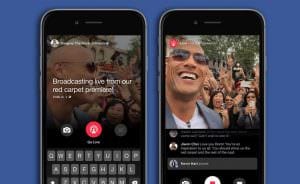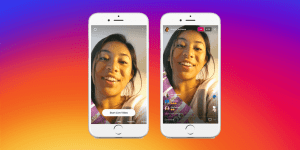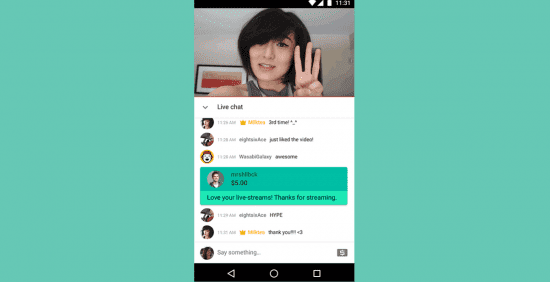Generate revenue online from Facebook, Instagram and YouTube live streaming
Social media networks such as Facebook, Instagram, and YouTube have reoriented their services towards video streaming to great success.
In the last few years, each company has developed live streaming opportunities that have enabled users to monetize their feeds in a variety of ways. The following article will highlight various ways to monetize live streaming using each platform.
Facebook first offered their ‘Live’ function almost two years ago. It enables users to post streams as well as one-off videos. Since then, video has become one of the most used features on the site.
In February 2014, prior to launching video streaming, only ¼ of all videos posted to the site were uploaded directly while the rest came from YouTube or similar sites. One year later, after Facebook launched their video streaming function, nearly 70% of all videos posted to the site were uploaded directly.
This has resulted in Facebook becoming one of the most profitable video streaming services on the planet. But don’t take my word for it, the numbers speak for themselves: in Q1 of 2015, the company made over $3.3 billion in ad revenue as a direct result of live video implementation.
How to build a consistent following to monetize Facebook Live Stream?
- Maintain air time consistency
- incorporate an overall theme
- Select a title that gives viewers a sense of content
Doing all of these things will result in a steady stream of viewership, just like any other television or video streaming series. While all of the above is established, creators should also be developing a plan to secure sponsorships.
The four different types of sponsorship
- Episodic: A per-stream rate-based structure (users are paid a specific amount of money for each stream).
- Product only: Sponsorships are essentially trading with companies. Users trade their face time in exchange for a company’s products. While there is no cash transaction here, users have the potential to receive many items that could eventually be beneficial to their business. Additionally, this is an ideal option for users who are unable to maintain a consistent streaming schedule.
- Package: This allows users to include 'shoutouts’ as perks of a larger deal. For example, if a user enters into sponsorship negotiations with a company, they may be asked to provide a line item breakdown of promotional output to entice the company to sponsor them. This is where live streaming can be used as an effective tool. Users can offer a specific amount of promotional videos or shoutouts in exchange for higher payments.
- Flat Rate: These are exclusive sponsorships made between a user and one company for a certain timeframe. The rate is based on the overall viewership amount as well as an exclusivity charge.
Facebook’s revenue policy is the same as YouTube’s. Users can keep 55% of the total while Facebook takes 45%. The company splits the revenue from all ads viewed in the span of a single session. Payouts are calculated in accordance with the total amount of time a user spends watching a video.
Earlier this year, Instagram rolled out their live streaming feature, which affected other video streaming platforms such as Snapchat and Periscope. One of the most advantageous aspects of this new feature is the ability to sell shoutouts, which encourages greater interaction between creators and followers.
Just like other live streaming services, the best way to increase viewership is by maintaining a consistent streaming schedule, posting engaging content, and interacting with accounts that align with the overall theme of the host account.
Purchasing and selling shoutouts is easy. If purchasing, find someone with an enticing amount of followers and contact them about their pricing. If you’re selling, more often than not, the users will come to you. Either way, it doesn’t hurt to leave some contact information somewhere in your profile so that users know how to contact you.
Additionally, you could post to a forum (this works both ways, as users can request and list shoutout services) or sign up with a shoutout website. The average hourly rate charged by accounts with at least 100k followers is approximately $15.
YouTube
For years, YouTube has remained one of the most popular online video sites in the world. Since the company announced their Live Streaming platform at VidCon last year, they have made a consistent effort to boost their live streaming functionality.
Earlier this year, YouTube rolled out a mobile live streaming feature to select users. This allows users ample opportunity to monetize their feeds.
The two best ways to monetize is by enabling monetization and using their new Super Chat feature.
If a channel has enabled monetization, YouTube prompts three different types of ads for eligible content. However, it should be noted that serving is not guaranteed and even if implemented, some viewers may not see it. Most live streams are eligible for three types of ads:
- Pre-rolls: These ads run prior to a live stream and can be viewed on both mobile and desktop browsers
- Mid-rolls: These are triggered during a live stream and can be manually enabled throughout desktop streams.
- Displays and overlays: These appear beside or on top of content and can be viewed via desktop.
On January 12, 2017, YouTube implemented a new monetization feature called Super Chat that lets users pay to highlight their chats within the live stream.
The basics of Super Chat are extremely simple: the more a user pays, the longer their message remains pinned. The color of the chat is also determined by the amount paid. This feature replaced their Fan Funding tool, which was essentially a tip deposit that allowed viewers to pay creators.
Many users have described Super Chat as a game changer, primarily because it encourages interaction between users and creators by amplifying the visibility of contributing users.
A few weeks after Super Chat was rolled out, YouTube enabled mobile streaming for creators with more than 10,000 subscribers and plans to incrementally enable the feature for other users in the future.
This promotes further interfacing between creators and users by affording creators a mobile means of interacting with contributing users. Like its stationary counterpart, the mobile streaming feature is especially powerful when used in tandem with Super Chat. For example, creators can give shoutouts to users who leave generous Super Chat comments, allowing those users to achieve higher visibility.
Have you tried live streaming? Which platforms work better for your company? We’d love to know your thoughts. Either comment below or tweet us with your thoughts.
from Blog – Smart Insights http://www.smartinsights.com/digital-marketing-platforms/video-marketing/monetize-live-streaming/
via Tumblr http://euro3plast-fr.tumblr.com/post/164248986964




 Thanks to John Surdakowski for sharing advice and opinions in this post. John is the founder and creative director at
Thanks to John Surdakowski for sharing advice and opinions in this post. John is the founder and creative director at
No comments:
Post a Comment